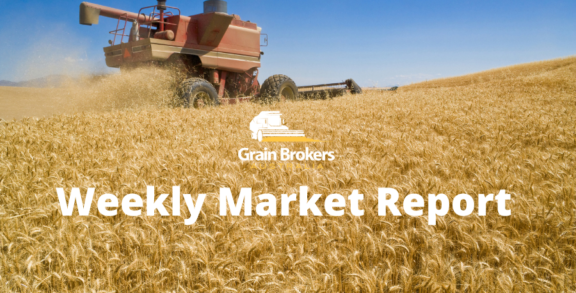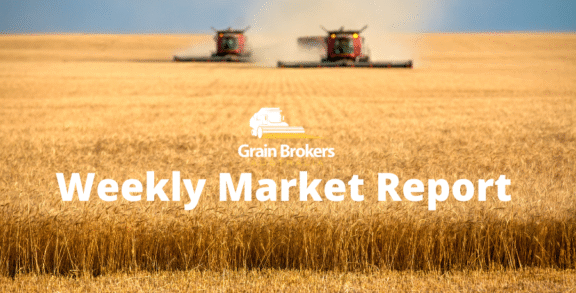
A plethora of anticipation and conjecture traditionally precedes USDA’s annual Prospective Planting Report and a high degree of grain futures volatility invariably follows the late March release as the market digests the numbers relative to expectations and place their bets on the likely impact.
Released last Thursday, the National Agricultural Statistics Service (NASS) report signals the beginning of the new crop season in the US, and the results are based on surveys conducted during the first two weeks of March from a sample of nearly 72,000 grain farmers across the nation. The report provides an early yardstick on planting intentions that allows producers to make the required course corrections to maximise farm profitability before all this season’s crop inputs are in the ground and the production outcome is at the mercy of Mother Nature.
While the corn area came in below expectations, it was the drop in the nation’s total principal crop area that caught the market by surprise and wondering where all the hectares have gone? The USDA expects a year-on-year decline of 2 per cent from 129.3 million hectares in 2023 to 126.8 million hectares this year. That is 2.5 million hectares planted last season that farmers apparently do not intend to plant in 2024. The playing field has shrunk with the most significant falls occurring in Kansas and Texas, down 525,000 hectares and 485,000 hectares, respectively.
Most analysts expect the planted area number to be higher come June when the next area estimate is released, and the market’s role is to guide growers into the most appropriate crops for that uncommitted area between now and the close of this year’s spring and summer crop planting windows.
However, the overall attitude going into the seeding season is far from optimistic, suggesting that the area recovery may be subdued. Farmers appear to be playing a defensive rather than offensive game by slashing the corn area to cut back on expensive inputs and increasing the soybean and spring wheat areas.
Grain prices have been on a downward spiral, and input costs on an upward trajectory over the past six months, squeezing production margins and discouraging the planting of marginal land. Add the growing weather uncertainty, and the prevent plant play becomes quite a compelling game day strategy at the moment.
Additionally, the double-cropped soybean area is counted twice in the USDA report, which makes absolute sense. However, around 7 per cent of the soybean area was double-cropped in 2023 against a long-term average of 4-5 per cent, which would take around 800,000 hectares off the soybean area compared to last season.
That said, US farmers intend to plant 35 million hectares of soybeans in the 2024 campaign, 3.5 per cent higher than the 33.8 million hectares planted a year ago and slightly more than the average pre-report trade estimate of 34.9 million hectares. November soybean futures closed the short week 0.3 per cent higher on the news, while the spot May number ended fractionally lower on the back of a higher March 1 stocks number.
The intended area is also nearly 400,000 hectares less than the February Outlook Forum number, most likely due to the double-crop factor. Significant area increases are expected in Arkansas, Illinois, Indiana, Iowa, Kentucky, Louisiana, Michigan, Minnesota, Missouri, North Dakota, Ohio and South Dakota, while a record is on the cards for both Kentucky and New York. Decreases are indicated in Alabama, Kansas, Maryland, South Carolina and Texas.
The estimated corn area of 36.4 million hectares is down 5 per cent or 1.86 million hectares on the final, near-record area in 2023. While a decrease was expected, the magnitude of the fall certainly caught traders by surprise, coming in 2.2 per cent below the average pre-report estimate of 37.2 million hectares. The farmer reaction to lower prices and squeezed profitability was clearly evident, with a modicum of rotation realignment also thought to have contributed. Significant decreases are projected in Illinois, Indiana, Iowa, Minnesota, Ohio, South Dakota, and Texas, while the planted areas in Arizona and Oregon will be the largest on record if realised.
After the USDA numbers landed, Chicago corn futures posted their largest one-day rally since July last year, taking out the 50-day moving average as the shorts scrambled to offload risk. The May corn contract jumped 3.6 per cent on big volume, with the price momentum expected to continue when markets open after the Easter long weekend. Slightly lower than forecast March 1 stocks may have aided the cause despite being noticeably higher year-on-year.
The sorghum area is forecast to be 2.6 million hectares, 11.1 per cent lower than the 2023 campaign. Kansas and Texas are the two biggest producing states, with the area down 7 per cent and 25 per cent, respectively. Conversely, the cotton area is projected to be 4.3 per cent higher this year at 4.3 million hectares. Texas, the biggest producing state, is down 1 per cent, but Alabama, Mississippi, Missouri and Oklahoma are all up significantly year-on-year.
All wheat planting intentions came in at 19.2 million hectares, down 4.2 per cent from the final area of 20.1 million hectares in 2023, but close to market expectations. The winter wheat component came in around 400,000 hectares lower than expected at 13.8 million hectares, down a tad over 1 million hectares, or 7 per cent compared to last season. The durum wheat area of 820,000 hectares is up 21 per cent year-on-year, and at 4.6 million hectares, the spring wheat area is 1.2 per cent more than the final planted area last year. The wheat report was relatively neutral, but the class changes sent Minneapolis futures lower, while Chicago and Kansas closed higher in Thursday’s trade.
Among the other US winter and spring crops, the barley area plunged 17.3 per cent to just over 1 million hectares, and the oats area is forecast to fall by 9.3 per cent to just under 900,000 hectares. On the other hand, the canola area is forecast to increase by almost 1 per cent to a new record, and within reach of the 1 million hectare threshold.
For now, it seems the risk of a bearish surprise has been removed, with funds rumoured to have reduced their short positions ahead of the report. Tensions are escalating in the Black Sea region, some corn productions issues are surfacing in South America, and many parts of the European winter and spring crop areas are very wet. With almost the entire northern hemisphere growing season ahead of us and the weather uncertainty building, the key players are slowly taking to the field. But the actual game is in its infancy, and the result is still a huge unknown.
Call your local Grain Brokers Australia representative on 1300 946 544 to discuss your grain marketing needs.





